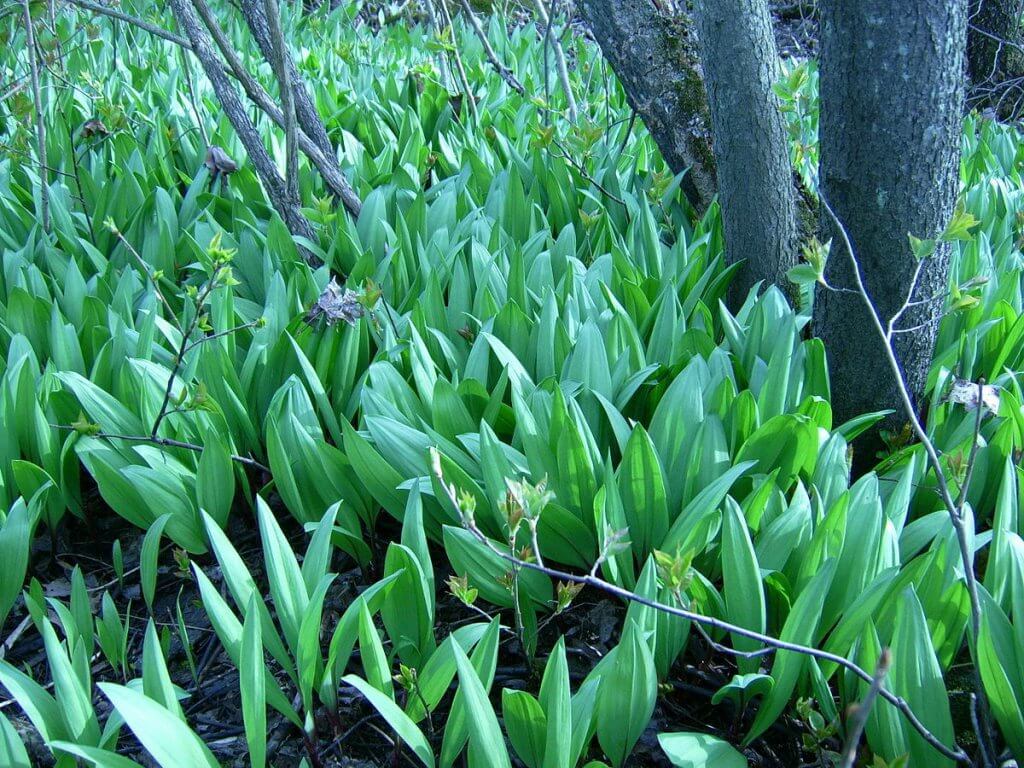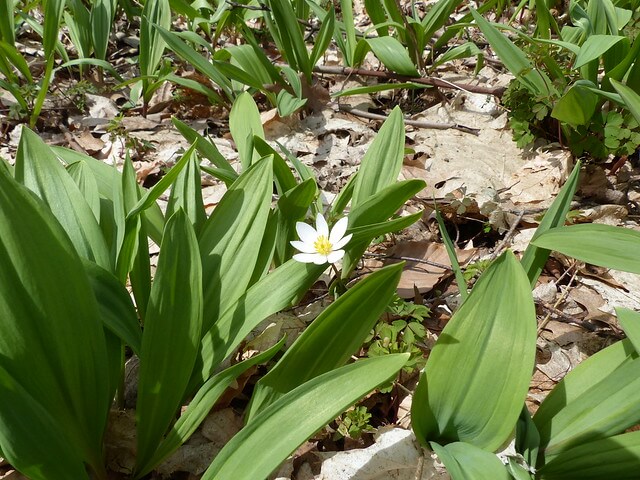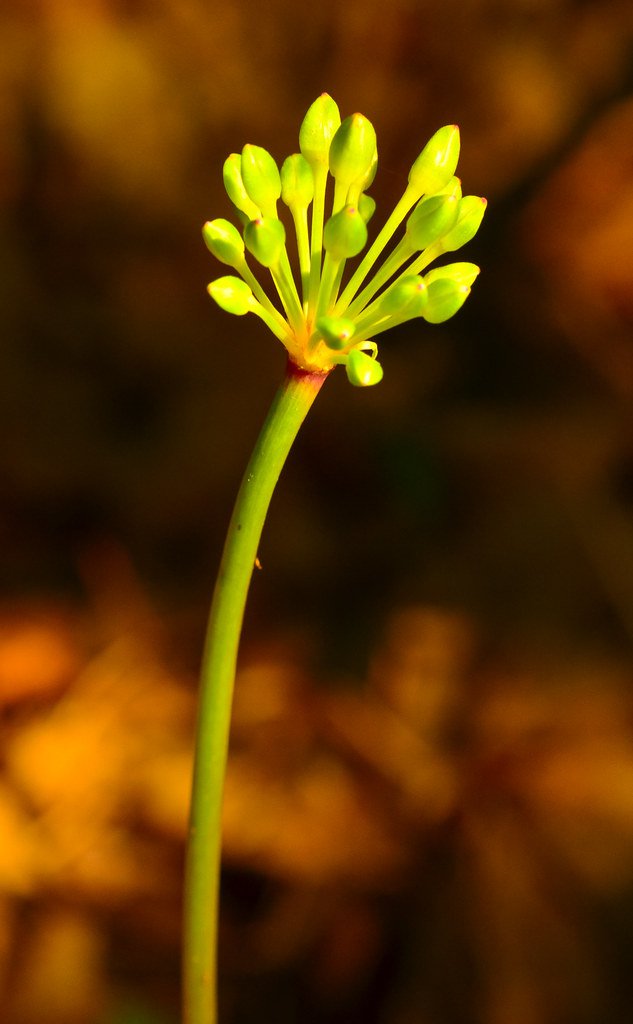
(Photo by: Fungus Guy/Wikimedia Commons)
Ramps (Allium tricoccum) are a wild onion species native to North America. While this woodland edible’s bulbs resemble that of a scallion, it has beautiful broad green leaves. It’s one of the earliest wild edibles to emerge in the spring and it’s a wonderful food source all year round. This herb is well-known among foragers and foodies alike for its wonderful taste and aroma along with its great medicinal uses.
Edibility and culinary use
This herb has been consumed for thousands of years by Native Americans. The leaves, stems, bulbs, and flowers of this plant are all edible. Ramps are famous for their strong garlic-like aroma and delicious onion-like flavor. It can be used and cooked as you would with regular leek and spring onions. It can be adapted into numerous recipes as a substitute for onion, garlic, or the common leek. Use ramps sparingly when you’re using it as a seasoning as its strong flavor can easily overpower the taste of your dish.
You can also chop up ramps and sprinkle them over a salad. This green can also complement your favorite sandwich or sub nicely. This herb also tastes particularly good and unique when deep-fried in batter. Ramps pesto will also complement pasta really well. You can also submerge them in olive oil to make a delicious infused-oil that will taste great for cooking and as a salad dressing. Lastly, you can boil, sautee, grill, or roast them to make a delicious vegetable side dish.
Health benefits
Aside from being delicious, this pungent herb is also very nutritious. It’s very rich in vitamins A, B9, and C as well as essential minerals, such as iron, selenium, and copper. Ramps also contain useful sulfur compounds as well as powerful antioxidants. For this reason, ramps have been shown to prevent tumors and cancer.

(Photo by: John Winkelman/Flickr)
Ramps are also great in maintaining cardiovascular health. It contains a sulfur compound called kaempferol which protects blood vessels lining against damage and helps the liver in eliminating bad cholesterol from the bloodstream. Its rich iron content also boosts red blood cells production. Lastly, vitamin B9 or folate helps lower high blood pressure and prevent stroke.
Additionally, ramps are also a popular herbal remedy among Native Americans. The Ojibwa and Iroquois use ramps decoction as a quick-acting emetic, as a treatment for worms in children, and as a spring tonic that will flush out toxins and restore health. Meanwhile, the Cherokee consumes this herb to ward off cold, flu, croup, and other respiratory infections. They also use the juice of this herb to aid earaches.
Cultivation
While you can easily find ramps growing around local forests, it’s unsustainable to forage them. Overharvesting them can take a toll on its population and cause problems to the environment. When you forage them from the wild, make sure to only clip some of the leaves and stems instead of digging the plant along with its bulb. This way, they’ll be able to grow back over time. While doing this can help the local ramps population, it’s recommended to just grow some plants in your garden. That way, you’ll have a steady source of ramps without having to disturb the environment.

(Photo by: Joshua Mayer/Flickr)
You can buy ramps seeds online or from local nurseries. But it’s not recommended to grow this plant from seed as they take a very long time to germinate and mature. The best way to grow ramps is to transplant the bulbs. You may be able to buy them from local nurseries. But if you can’t find any, you might have to get a few from the wild.
Be careful not to damage the bulbs and roots. You can start transplanting them in late fall or early spring. Choose a location that’s cool, moist, and partially shaded. Plant the bulbs 3” deep and 6” apart from each other. Make sure the tip of the bulb is above the ground. Water them well and cover them with 2” of shredded leaf mulch.
Cautions
There are no known dangers of consuming ramps moderately. However, overconsumption may result in food poisoning as well as cause nausea and upset stomach. Avoid giving this herb to your pets, especially in large amounts. Cats and dogs are susceptible to ramps poisoning.
Conclusion
With such amazing culinary and medicinal uses, it’s not hard to see why ramps are so popular. Despite its strong and pungent smell, this herb is very versatile and can be used in a lot of different recipes.
Unfortunately, this popularity acts as a double-edged sword. While this herb is regarded highly, a lot of events and festivals held to praise it has caused its population to suffer. So, while this is a great herb to include in your daily diet, try not to forage it from the wild. Instead, try growing some ramps plants in your own vegetable garden. That way, you’ll be able to reap all the benefits ramps has to offer without hurting the environment.
---------------
Writen by Cornelia Tjandra
Cornelia is a freelance writer with a passion for bringing words to life and sharing useful information with the world. Her educational background in natural science and social issues has given her a broad base to approach various topics with ease. Learn more about her writing services on Upwork.com or contact her directly by email at cornelia.tjandra@gmail.com
Many of our readers find that subscribing to Eat The Planet is the best way to make sure they don't miss any of our valuable information about wild edibles.
See our privacy policy for more information about ads on this site






